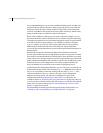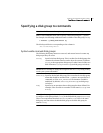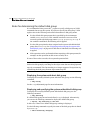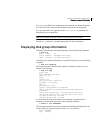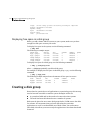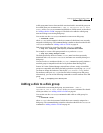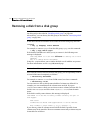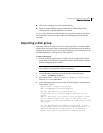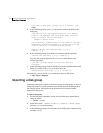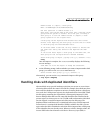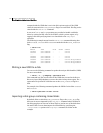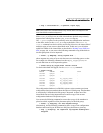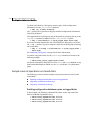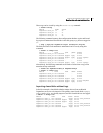
172 Creating and administering disk groups
Removing a disk from a disk group
Removing a disk from a disk group
Note: Before you can remove the last disk from a disk group, you must disable
the disk group as described in “Disabling a disk group” on page 207.
Alternatively, you can destroy the disk group as described in “Destroying a disk
group” on page 208.
A disk that contains no subdisks can be removed from its disk group with this
command:
# vxdg [-g diskgroup] rmdisk diskname
For example, to remove mydg02 from the disk group, mydg, use this command:
# vxdg -g mydg rmdisk mydg02
If the disk has subdisks on it when you try to remove it, the following error
message is displayed:
VxVM vxdg ERROR V-5-1-552 Disk diskname is used by one or more
subdisks
Use -k to remove device assignment.
Using the -k option allows you to remove the disk even if subdisks are present.
For more information, see the vxdg(1M) manual page.
Caution: Use of the -k option to vxdg can result in data loss.
Once the disk has been removed from its disk group, you can (optionally) remove
it from VxVM control completely, as follows:
# vxdiskunsetup devicename
For example, to remove c1t0d0 from VxVM control, use these commands:
# vxdiskunsetup c1t0d0
You can remove a disk on which some subdisks of volumes are defined. For
example, you can consolidate all the volumes onto one disk. If you use
vxdiskadm to remove a disk, you can choose to move volumes off that disk. To
do this, run vxdiskadm and select item 2 (Remove a disk) from the main
menu.
If the disk is used by some volumes, this message is displayed:
VxVM ERROR V-5-2-369 The following volumes currently use part of
disk mydg02:
home usrvol
Volumes must be moved from mydg02 before it can be removed.
Move volumes to other disks? [y,n,q,?] (default: n)
If you choose y, then all volumes are moved off the disk, if possible. Some
volumes may not be movable. The most common reasons why a volume may not
be movable are as follows:





